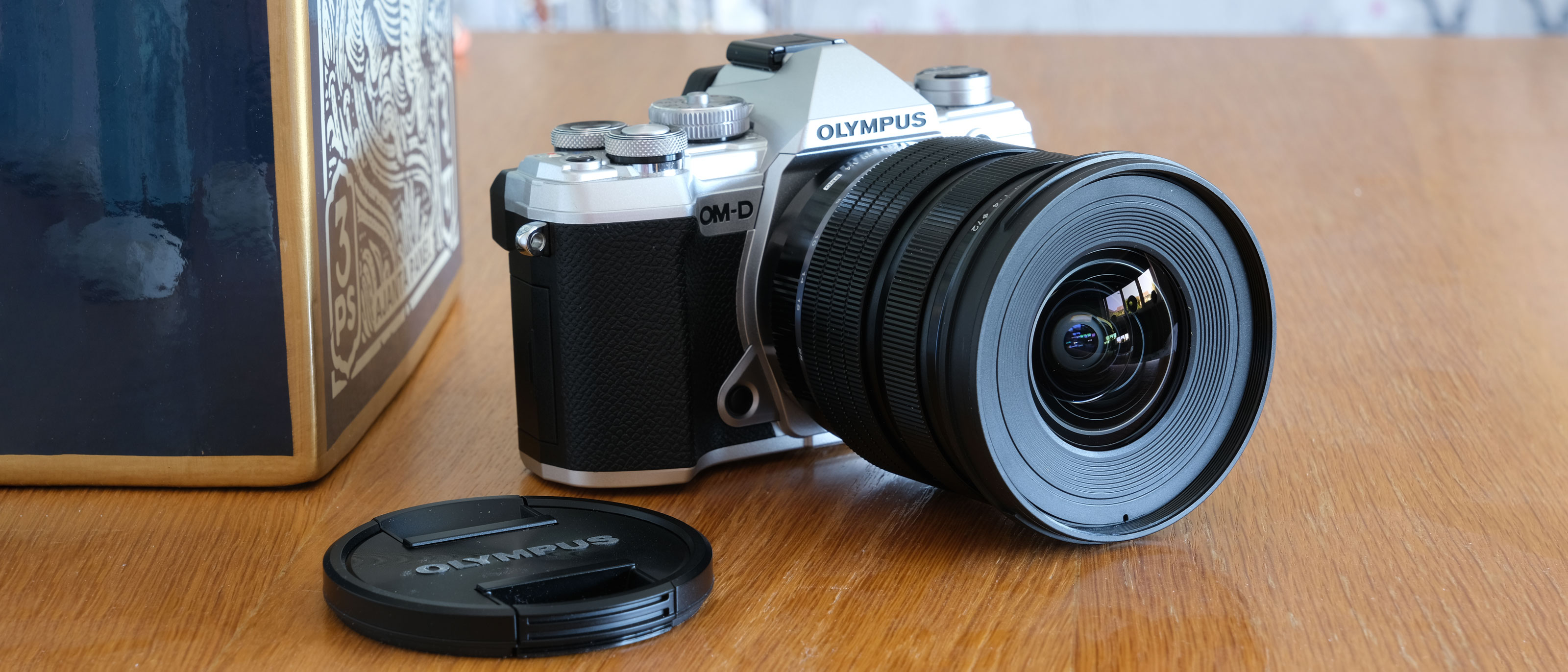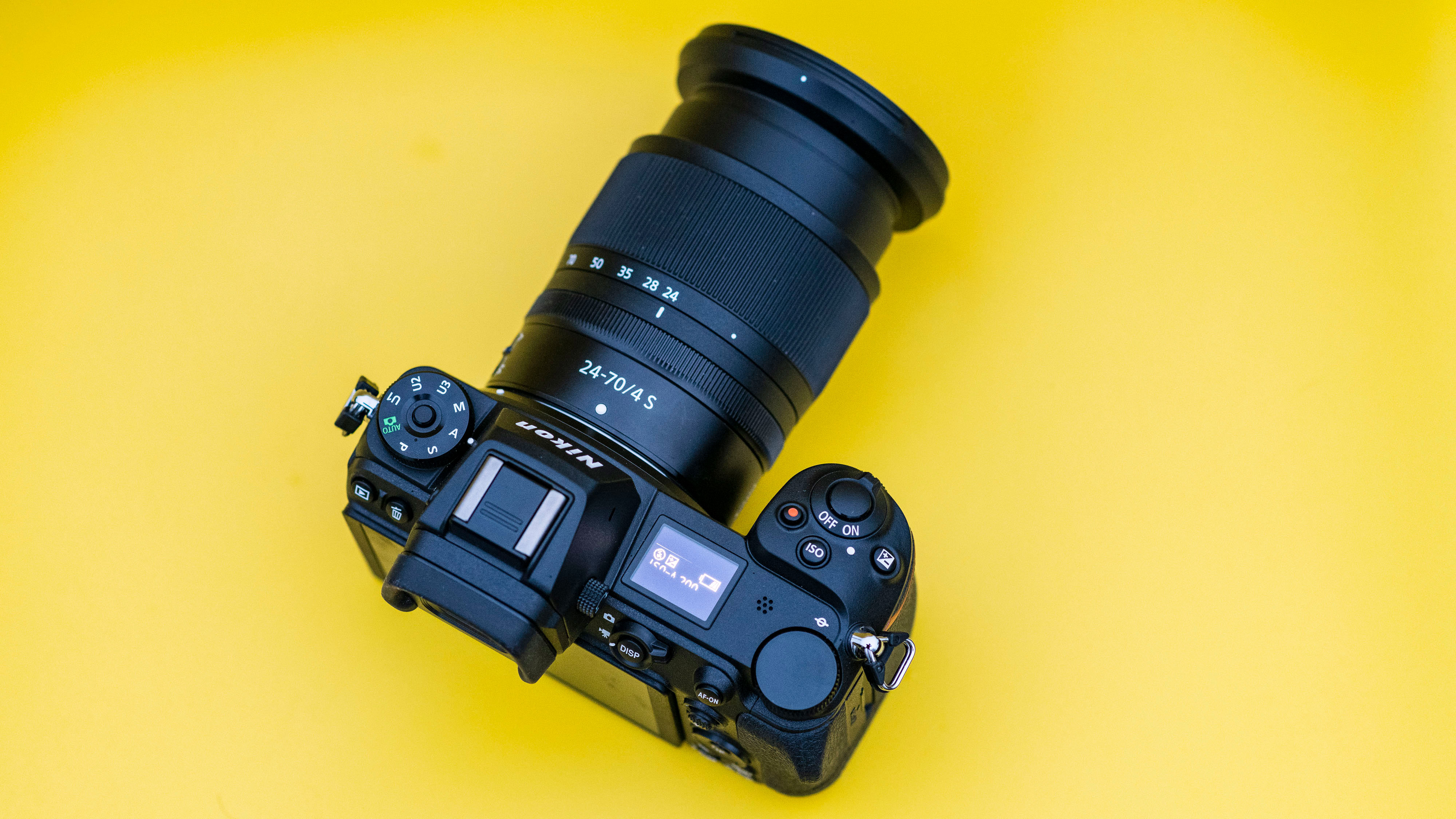Digital Camera World Verdict
The performance of the Olympus M.ZUIKO DIGITAL ED 8‑25mm F4.0 is excellent, and its focal range is just brilliant for photographers who like wide-angle perspectives. It means you can carry around just one lens instead of two. However, this is not a small lens. It’s slightly larger than the Olympus 12-40mm F2.8 PRO lens and not much smaller than the mighty 7-14mm F2.8 PRO. As a result, it might handle OK on an E-M1 body, but feels clumsy and front-heavy on a smaller camera like the E-M5 III or new E-P7.
Pros
- +
Incredibly useful focal range
- +
Excellent optical performance
- +
Short zoom action
- +
Handy L-Fn button
Cons
- -
Quite big and heavy for an F4
- -
Even longer when ‘unretracted’
Why you can trust Digital Camera World
The Olympus M.ZUIKO DIGITAL ED 8‑25mm F4.0 PRO is one of a rare breed of ultra-wide standard zooms. The only equivalents we can think of are the outlandish Panasonic 10-25mm f1.7 LEICA DG VARIO-SUMMILUX ASPH Lens (20-50mm equivalent) and the full frame Panasonic LUMIX S 20-60mm f3.5-5.6 Lens. Neither lens covers the same angles of view as this Olympus.
So who is it for? Well, if you’ve ever felt your standard zoom doesn’t go wide enough and goes a little longer than you usually need, this is the lens for you!
Most standard zooms offer a 24mm equivalent angle of view, which is wide, but not THAT wide. The M.ZUIKO DIGITAL ED 8‑25mm F4.0 PRO zooms all the way out to 16mm equivalent, which is well into ultra-wide territory.
So for photographers who see the world from a wider angle, this lens can mean they don’t need to carry both a standard zoom and an ultra-wide zoom – or keep swapping between them.
It’s one of Olympus’s PRO lenses, which means it has a constant maximum aperture (F4 in this case) and it’s built for optical quality and performance. More on that later.
Specifications
Focal Length: 8‑25mm (16-60mm equiv.)
Angle of view: 107-47°
Maximum aperture: F4
Minimum aperture: F22
Number of aperture blades: 7, with circular aperture
Lens Construction: 16 elements / 10 groups, inc 2 aspherical, 1 DSA, 1ED, 1 Super ED, 1 HR, 1 Super HR and 1 HD element
Minimum focus distance: 0.23m (across the entire zoom range)
Maximum magnification: 0.21x (Micro Four Thirds) / 0.42x (35mm format)
Filter diameter: 72mm
Dimensions: 77 x 88.5mm
Weight: 411g
Key features
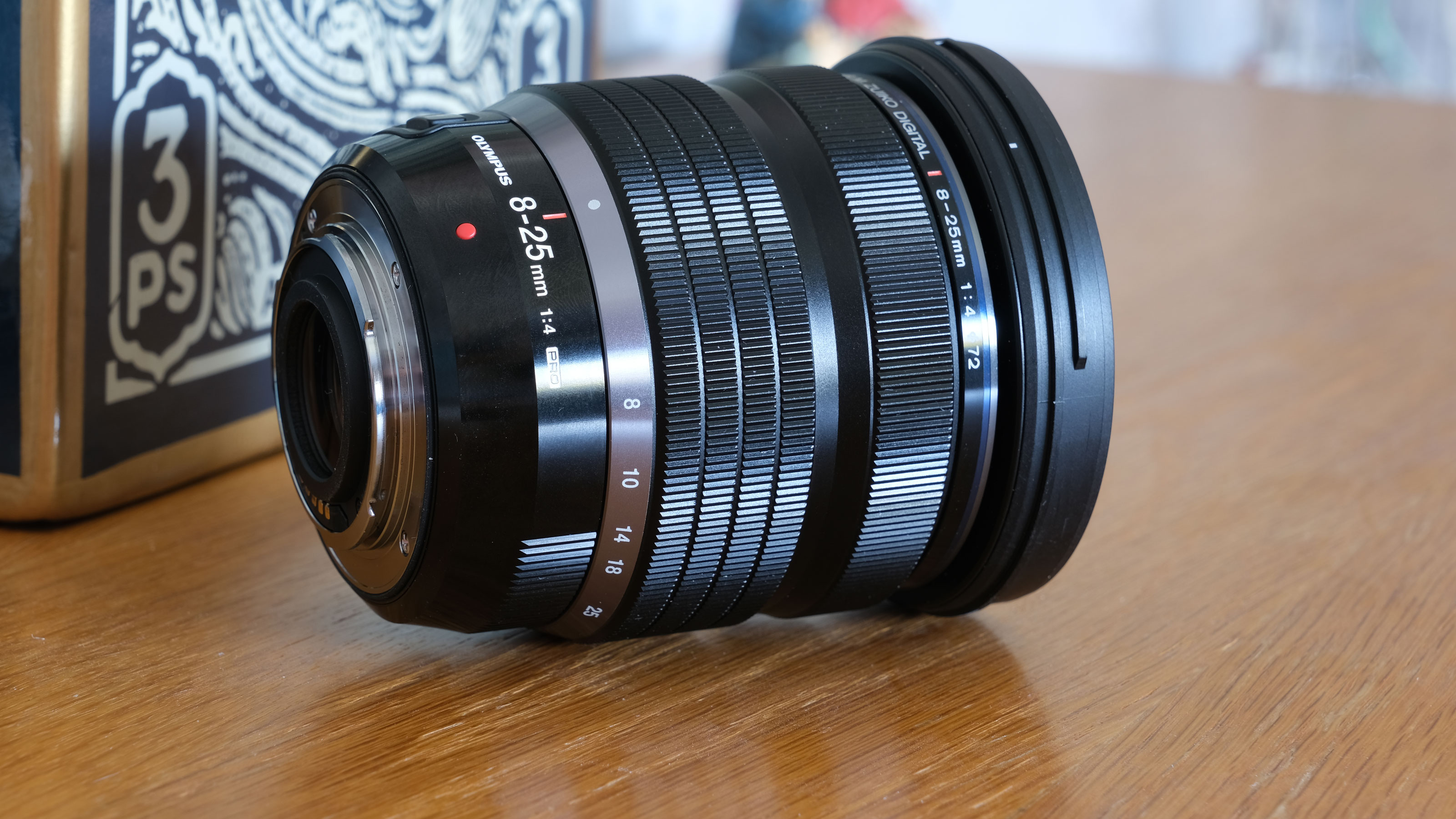
We’ve already spoken about the focal length, which is equivalent to 16-50mm in full frame camera terms and covers angles of view from ultras-wide right up to a ‘standard’ perspective.
This lens also comes with a constant F4 maximum aperture, which is a step up from the variable maximum apertures of most kit zooms, though not as fast as Olympus F2.8 PRO lenses.
There’s no image stabilizer, but Olympus bodies already incorporate one of the best stabilization systems on the market, so that’s not an issue. There’s no aperture ring either (Olympus lenses don’t use them), but there is a manual focus ring which is revealed by sliding back the focus ring clutch at the front of the lens – this also reveals a manual focus ring. The focus travel is short, though, and the focus distance scale has only a handful of markings for closer focus distances, so it’s some way short of the accuracy and precision you get from an old-school manual focus prime.
The other feature of note is a little less welcome. Olympus has used a retracting lens mechanism to keep this lens as compact as possible – though ‘compact’ is relative, since even when it’s retracted this lens is as big as the Olympus 12-40mm F2.8 PRO lens. When it’s extended, it’s longer still, and makes you think even more this is a pretty big lens for an F4.
Build and handling
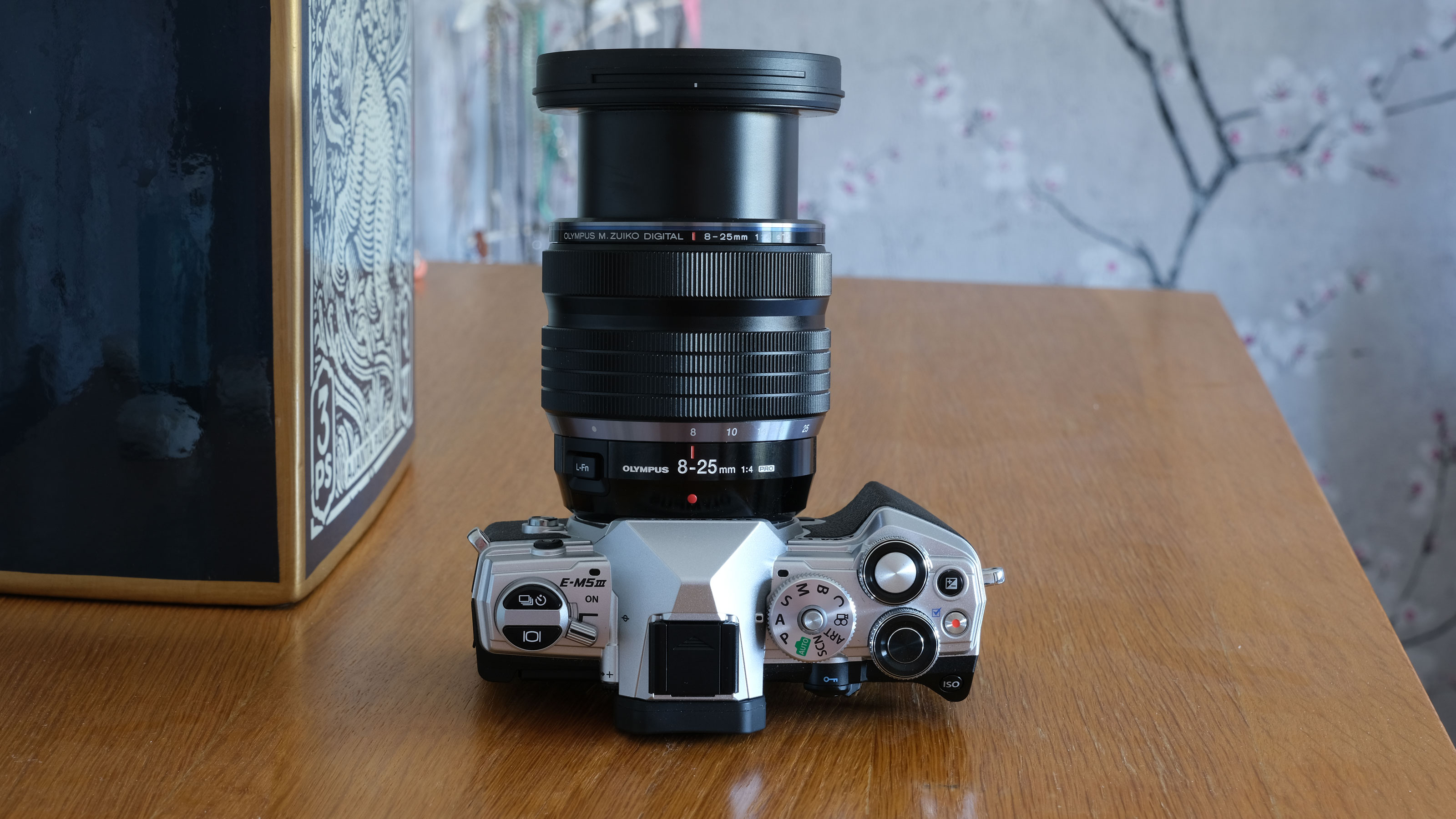
The short zoom throw makes this lens very quick to use when you’re experimenting with angles of view and perspective. The manual focus clutch is quite easy pull back accidentally when you’re putting the camera in bag or taking it out again, though, leaving you wondering why the darned thing won’t focus the next time you use it.
Admittedly, you do soon get used to that little quirk, plus the need to extend the lens before you can start shooting with it. When it is extended, though, it is longer still – in fact, it’s as long as our full frame Zeiss 16-35mm F4 and not a whole lot thinner, either. The Zeiss is only a 16-35 not a 16-50mm lens, of course, but even so, should this Olympus lens be almost the same size as one that’s two format sizes larger?
If big lenses on small camera bodies don’t bother you, then you’ll be fine. But if you like your cameras and lenses to balance nicely, you’ll only get that when this lens is on a larger body like an E-M1.
Performance


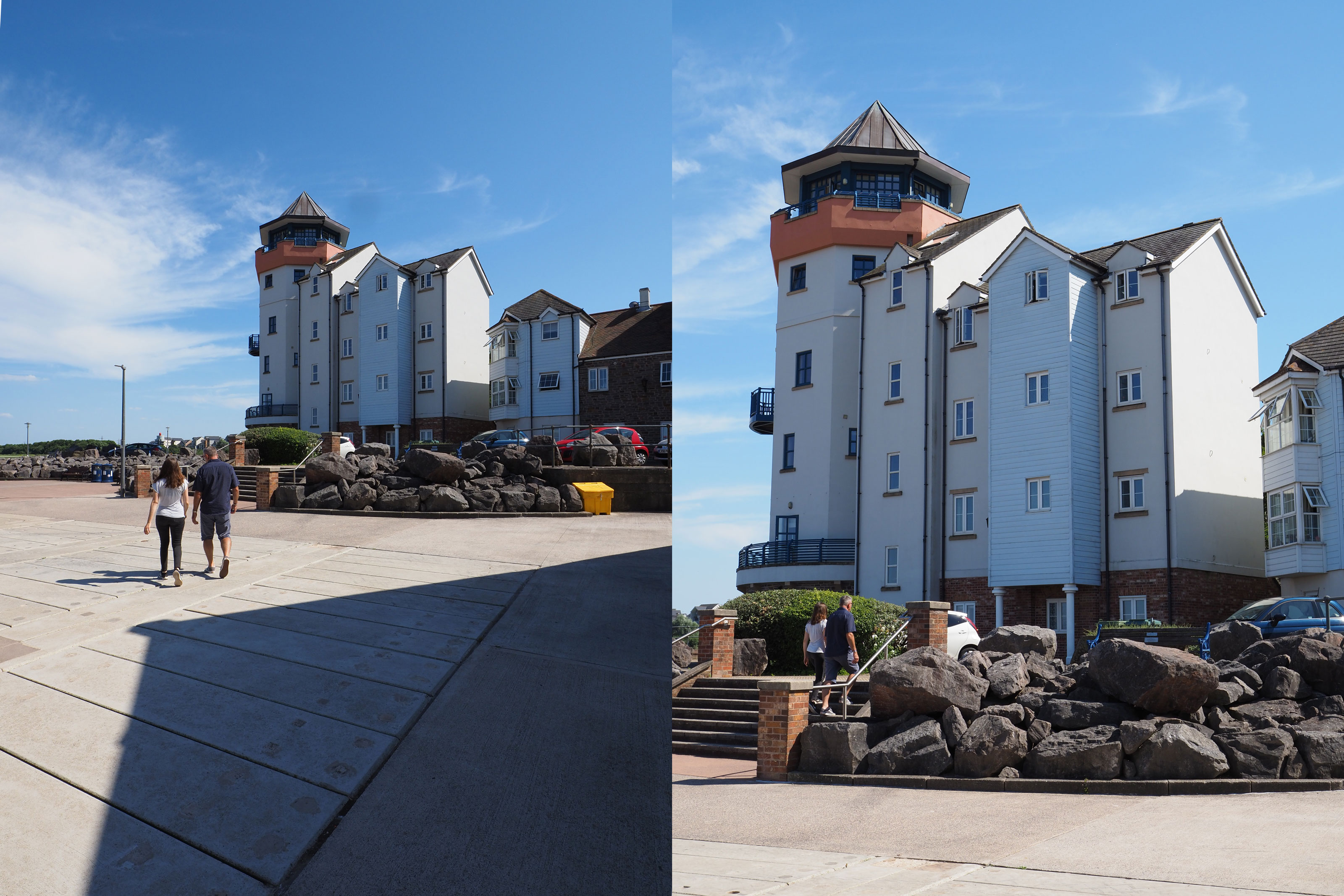



We’re used to Olympus Pro lenses being good, but really… this lens is excellent even by Olympus PRO standards. It shows consistent edge to edge sharpness right across the frame and right through the zoom range.
The lab tests show a loss in edge definition at wider focal lengths, but that as lab test chart distances – in real-world shooting with more normal subject distances, any edge drop off is so slight as to be scarcely noticeable.
Like other mirrorless makers, Olympus embeds lens correction data into images. It’s not just in-camera JPEGs which are corrected, but the raw files too. We’re not sure how this is done without a firmware update – and our OM-D E-M5 III pre-dated this lens by several months – but raw files from this lens open up straight as a die in Lightroom, Capture One and DxO PhotoLab. There’s no distortion, no color fringing, no vignetting and, as we’ve already observed, no significant edge softness.
Lab tests
We run a range of lab tests under controlled conditions, using the Imatest Master testing suite. Photos of test charts are taken across the range of apertures and zooms (where available), then analyzed for sharpness, distortion and chromatic aberrations.
We use Imatest SFR (spatial frequency response) charts and analysis software to plot lens resolution at the centre of the image frame, corners and mid-point distances, across the range of aperture settings and, with zoom lenses, at four different focal lengths. The tests also measure distortion and color fringing (chromatic aberration).
Sharpness:
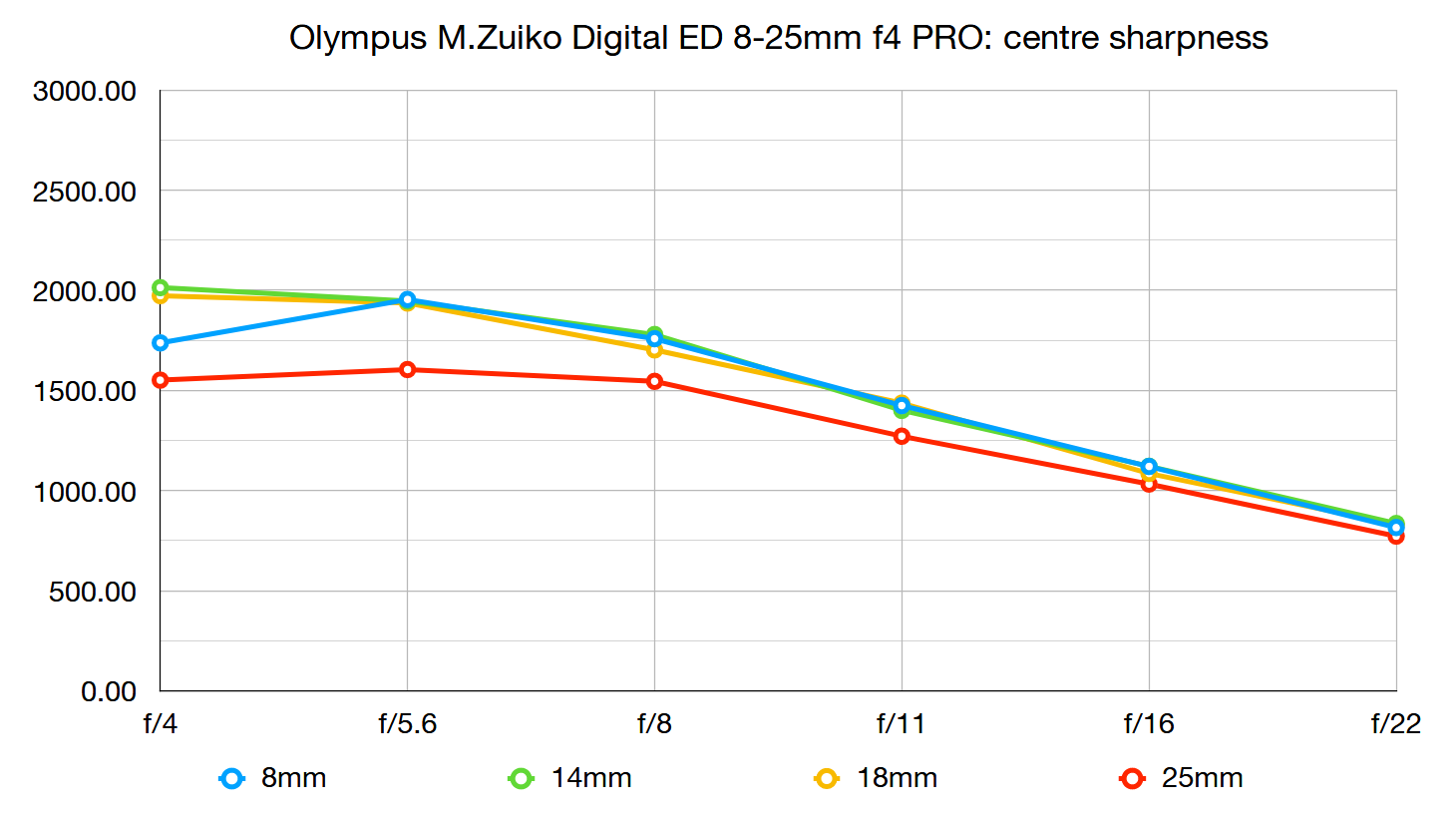
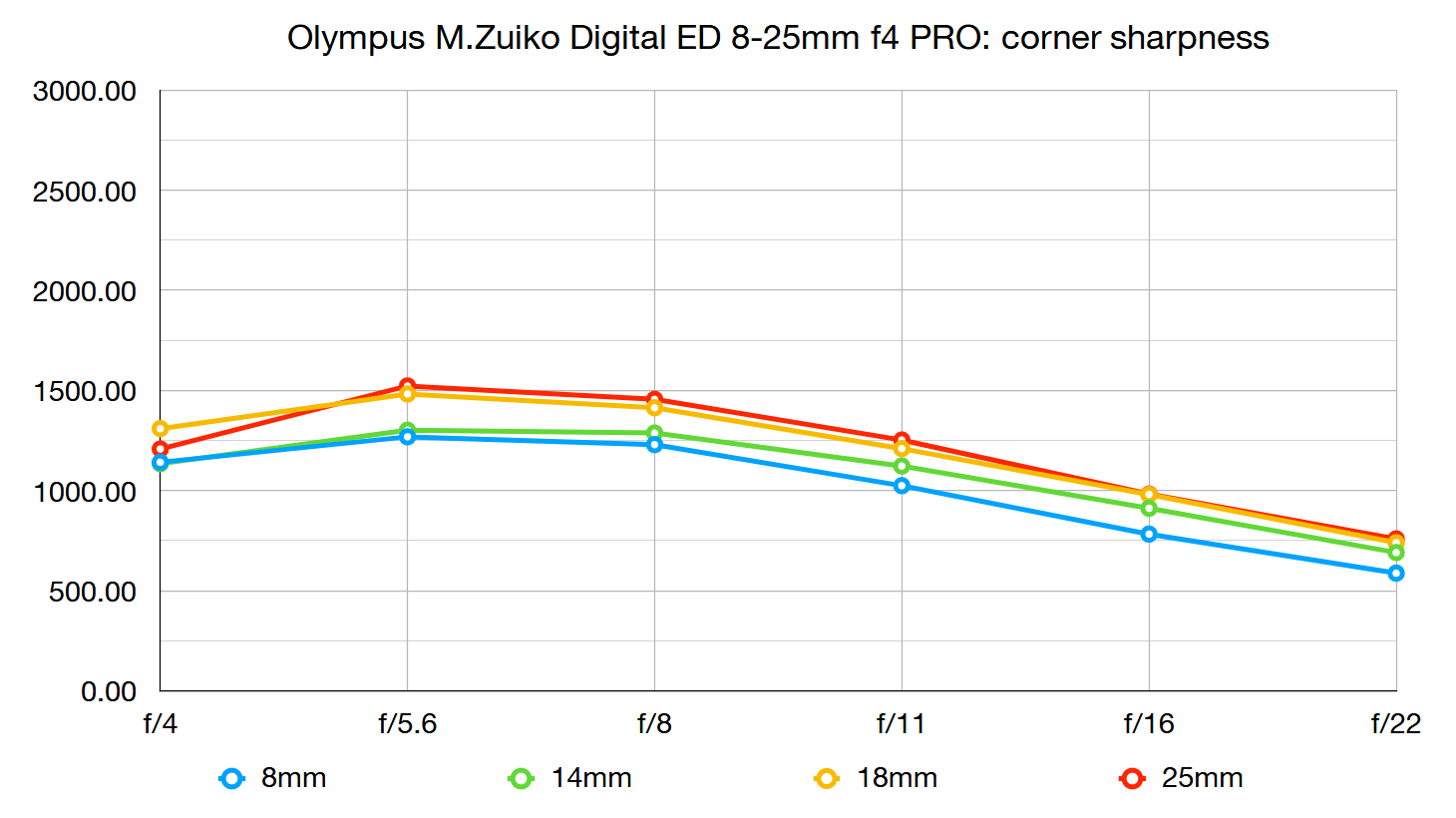
The Olympus M.ZUIKO DIGITAL ED 8‑25mm F4.0 PRO shows remarkably consistent center sharpness across the focal range, though it does drop off noticeably at 25mm. Corner sharpness is consistently good, which is all the more unusual in a lens this wide and when photographing lab charts at such close range, where ultra-wide lenses will be working extra hard to capture a flat field at such an extreme angle of view.
Fringing:
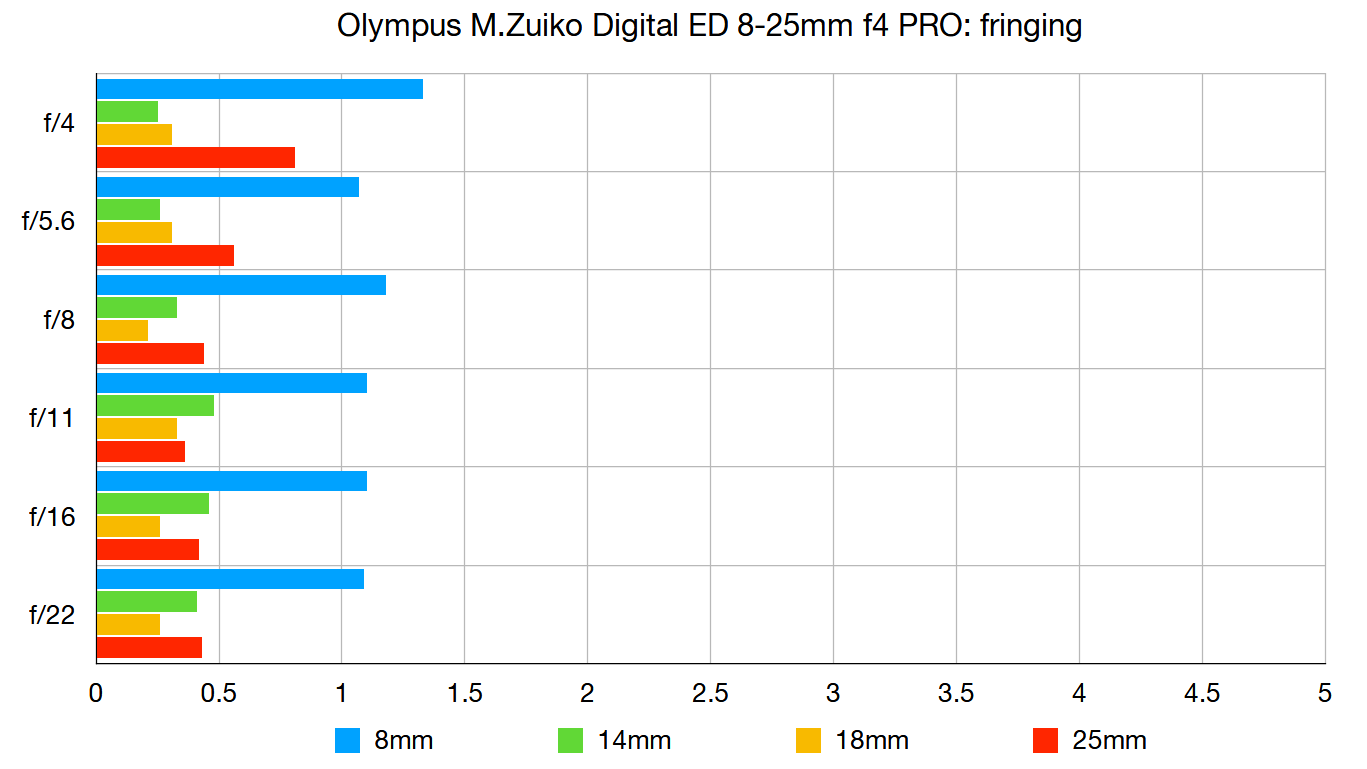
Colour fringing is at its greatest at the shortest focal length of 8mm, but even here it's rarely noticed – thanks no doubt to the correction profiles embedded in the image files.
Distortion:
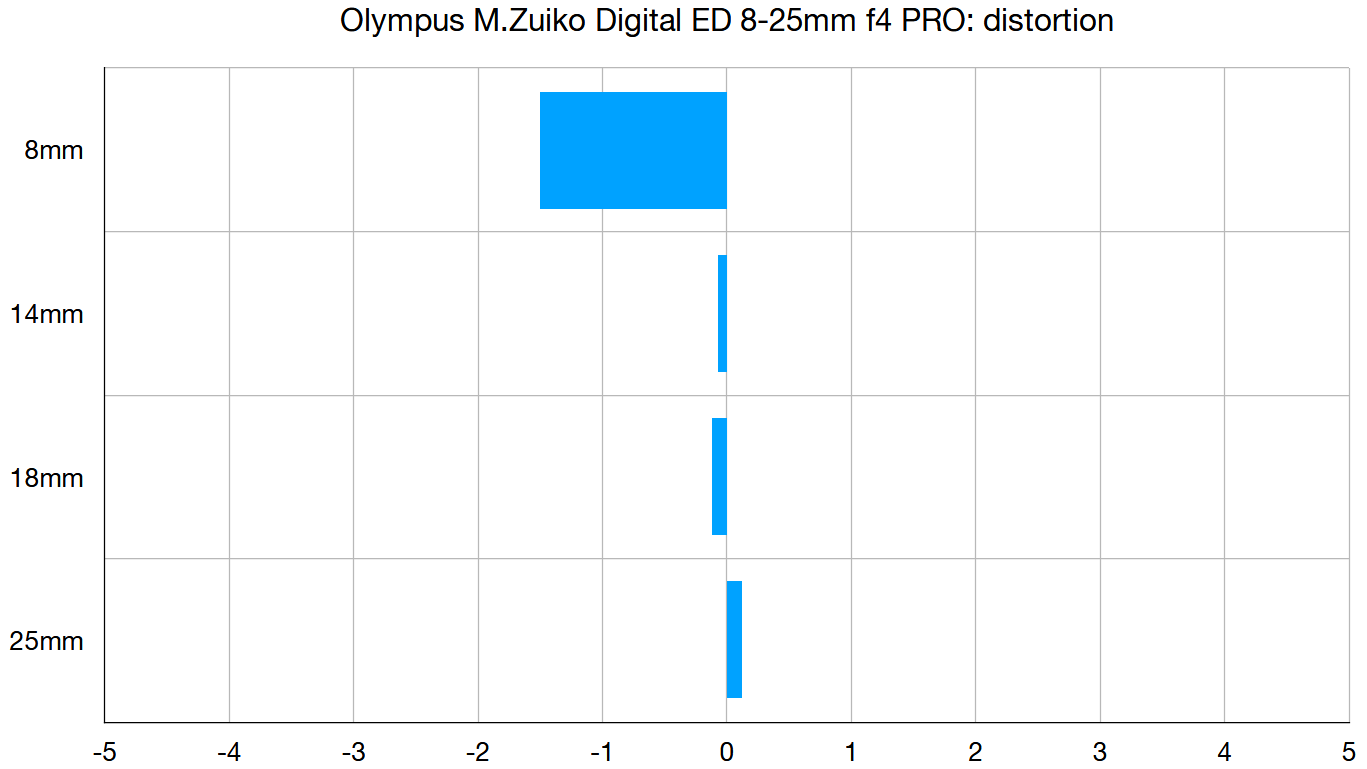
There is measurable distortion at 8mm, but it's essentially invisible to the naked eye in real-world shots.
Verdict
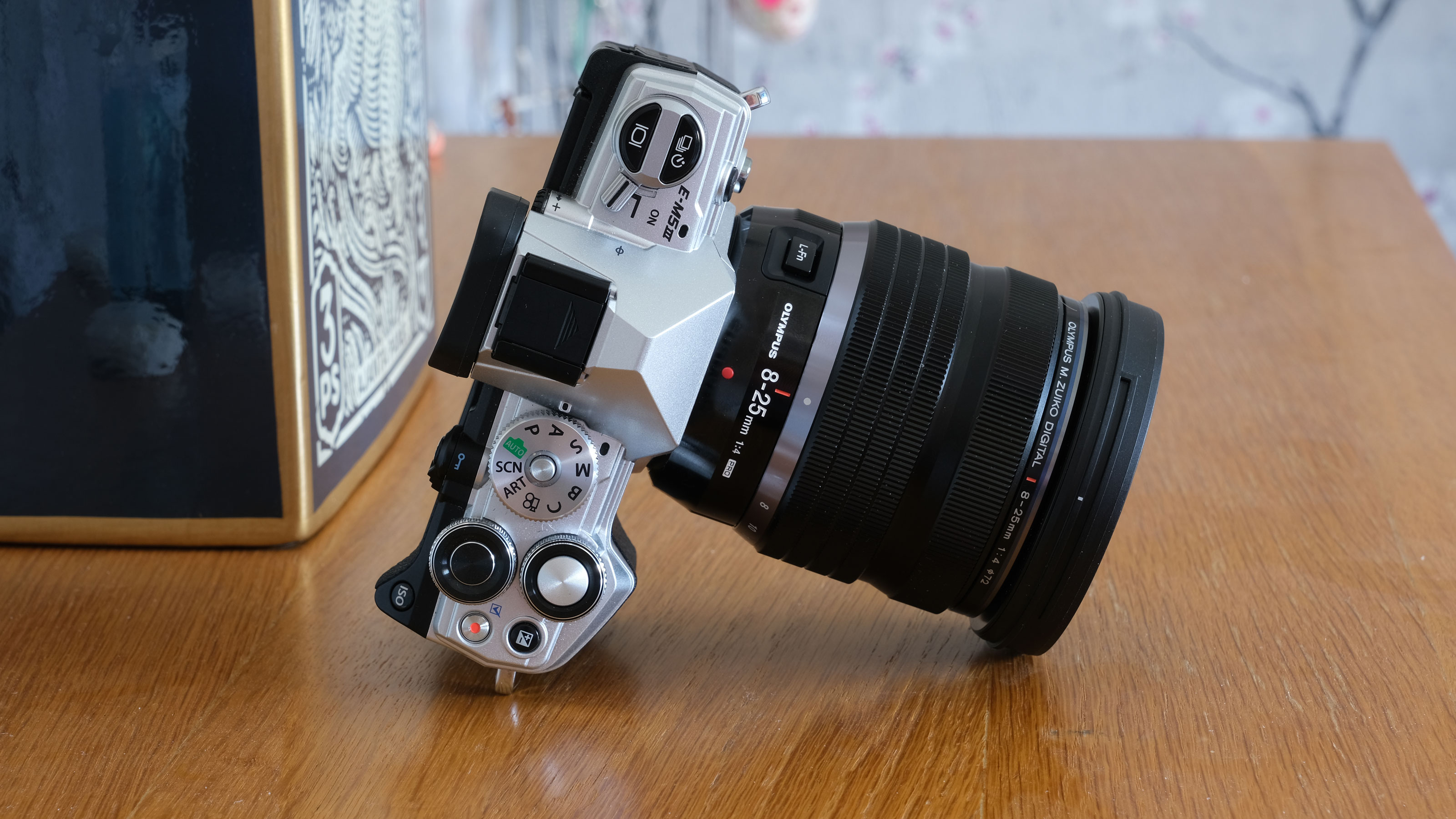
There are two things in this lens’s favor and one against. The two great things are its focal range, which is both exceptional and exceptionally useful, and its optical performance.
The zoom range is just a whisker over 3x, which is not exceptional on its own, but for many photographers it will cover exactly the focal range they use most often, in a way that no other lens does.
The optical quality is also a revelation. It’s no better than any number of other Olympus PRO lenses, but to achieve this high standard in a lens with such an unprecedented focal range is truly impressive. There are no optical compromises at all as far as we can see.
The one downside is this lens’s size. The strength of the Olympus MFT system is its size and lightness; however, this latest PRO lens, like its PRO stablemates, has neither. With lenses like this, Olympus is in serious danger of squandering its single biggest advantage as a camera system – size.
This poses a dilemma for Olympus fans. This is such a great lens you might even consider switching to a bigger body just so that it balances better on your camera, and that truly does seem cockeyed. We have complained before about the issue of big lenses on small cameras, and we’ve just had to do it again.
Read more:
• Best Olympus lenses
• Best Micro Four Thirds lenses
• Best Olympus cameras
• Best wide-angle lenses

Rod is an independent photography journalist and editor, and a long-standing Digital Camera World contributor, having previously worked as DCW's Group Reviews editor. Before that he has been technique editor on N-Photo, Head of Testing for the photography division and Camera Channel editor on TechRadar, as well as contributing to many other publications. He has been writing about photography technique, photo editing and digital cameras since they first appeared, and before that began his career writing about film photography. He has used and reviewed practically every interchangeable lens camera launched in the past 20 years, from entry-level DSLRs to medium format cameras, together with lenses, tripods, gimbals, light meters, camera bags and more. Rod has his own camera gear blog at fotovolo.com but also writes about photo-editing applications and techniques at lifeafterphotoshop.com
